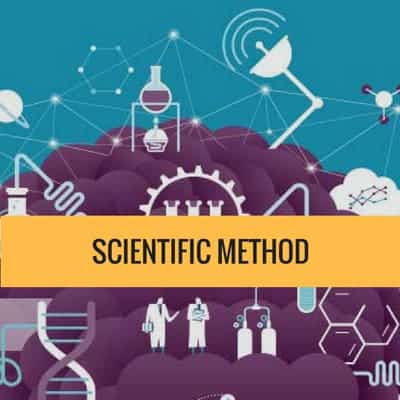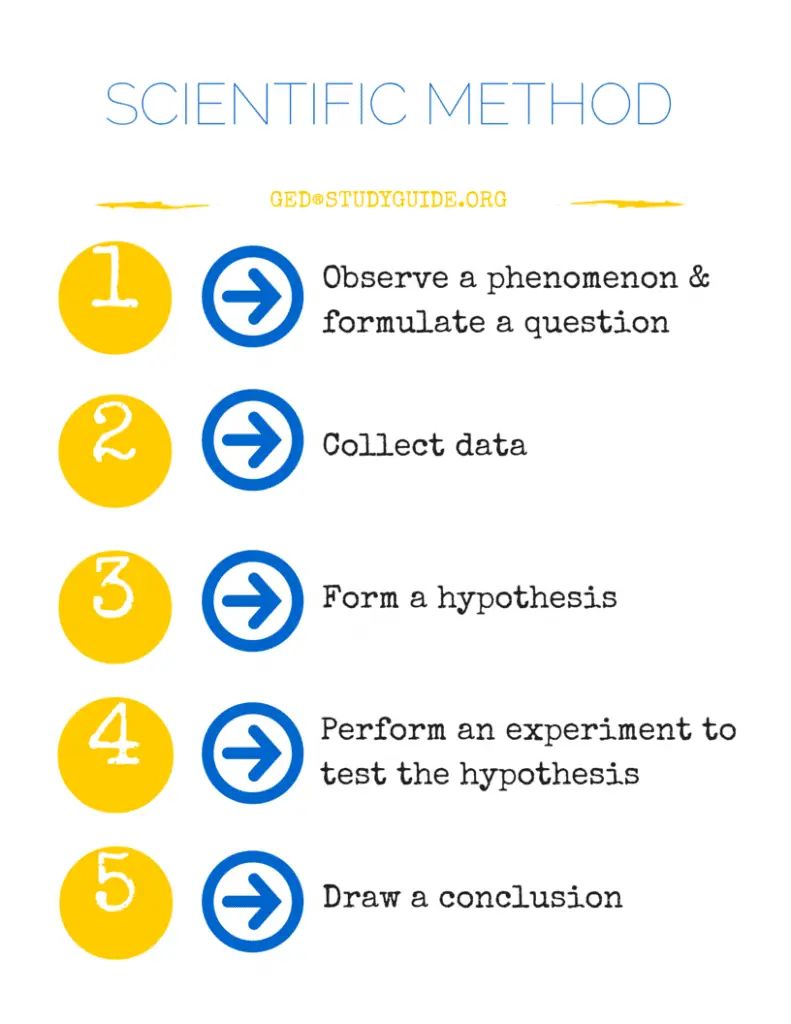A major part of the GED® Science Exam will be understanding and applying the Scientific Method. The Scientific Method is a collection of techniques used to observe facts and gain knowledge about a particular area of study. As you begin to write and design your own experiments and/or paragraph responses, you can use the steps of the Scientific Method as a guideline.
In the section that follows, you will find basic information about the Scientific Method. You will also find:
- Steps of the Scientific Method Guide
- Important Vocabulary Terms
- A Sample Science Test Reading
- A Sample Test Prompt and Practice Questions
Vocabulary Quiz
Do you know what each of these terms mean?
Hypothesis:
Answer:An educated guess about what you think answers the problem in the experiment.
Data:
Answer:Observable facts and information about the phenomenon you are studying.
Dependent Variable:
Answer:The phenomenon that you are studying.
Independent Variable:
Answer: Factors you believe might affect your phenomenon.
Sample Science Reading
Sam notices that on Wednesdays, after a weekly lunch meeting with his co-workers, he develops an upset stomach. After three months of discomfort, he begins to notice the correlation between the meals and the pain. Sam also notices that when he goes out for ice cream with his children, he develops the same symptoms. A co-worker suggests that Sam keeps a food journal, recording what he eats every day. Sam believes that once he finds out what food is bothering his stomach, he can control the pain and discomfort.
Sample Test Questions
Math of the steps of the Scientific Method in Section A with a phase of the investigation listed in Section B.
Section A
a. Form a hypothesis
b. Design a test
c. Collect data to test your hypothesis
d. Form a conclusion based on your data
Section B
1. Sam will keep a food journal for one month, recording everything he eats. He also keeps careful note of any pain and discomfort that may occur after each meal.
2. Sam tries to eat dairy on Thursday evening. He notices that it makes him ill. In an attempt to isolate the experience, Sam doesn’t eat anything until the morning.
3. Sam believes that by monitoring his food intake through a food journal for one month, he will be able to determine a milk allergy.
4. After reviewing journal, Sam finds that each time he ingests milk, he has a stomach ache. Based on his data, he believes that milk is to blame for his on-going stomach pain.
Our GED®Science Practice test will help you pass faster Check HERE
Answer Key
1. Sam will keep a food journal for one month, recording everything he eats. He also keeps careful note of any pain and discomfort that may occur after each meal.
Answer:b. Design a test
2. Sam tries to eat dairy on Thursday evening. He notices that it makes him ill. In an attempt to isolate the experience, Sam doesn’t eat anything until the morning.
Answer:c. Collect data to test your hypothesis
Start reviewing with our helpful contents: Free Online GED Classes Test Prep Questions
3. Sam believes that by monitoring his food intake through a food journal for one month, he will be able to determine a milk allergy.
Answer:a. Form a hypothesis
4. After reviewing journal, Sam finds that each time he ingests milk, he has a stomach ache. Based on his data, he believes that milk is to blame for his on-going stomach pain.
Answer:d. Form a conclusion based on your data
Related Topics:
- GED Science Practice Questions
- GED Practice Test for Science Exam
- GED Science page
- GED® Science Study Guide
- GED 101: 2019 GED Practice Tests, GED Classes for GED Exam – 1 Stop GED Programs Guide
- 3 Common Reasons Why Test-takers Fail GED
- Why GED Practice Tests – 3 Reasons You Should Take GED Practice Test Now
- 4 Things You Can Do After Passing the GED
- GED Study Guide


